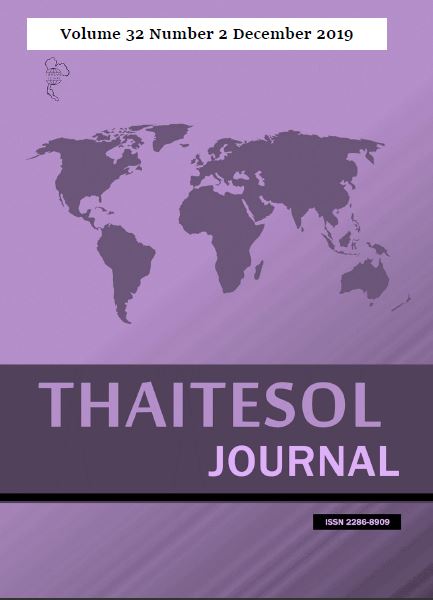Social Interaction in Second Language Chat Rooms
Main Article Content
Abstract
Although the English language used in chat rooms has been extensively investigated in computer-mediated communication (CMC) literature, most of the data is text based (e.g. Simpson, 2005; Smith, 2008; Pojanapunya & Jaroenkitboworn, 2011). Christopher Jenks’s Social Interaction in Second Language Chat Rooms, on the other hand, investigates second language chat rooms which are voice-based. It is a book of timely investigation of chat rooms as we are entering a new frontier of technology that can transform our interaction and allow us to be connected faster than ever before.
Article Details
How to Cite
Jaroenkitboworn, K. (2019). Social Interaction in Second Language Chat Rooms. THAITESOL Journal, 32(2), 86–89. retrieved from https://so05.tci-thaijo.org/index.php/thaitesoljournal/article/view/229327
Section
Book Review
Materials in THAITESOL JOURNAL may be photocopied for educational purposes. Under no circumstances may any part of this journal be photocopied for commercial purposes.
References
Hopkins, J. E. (2010). Distance language learners’ perceptions of assessed, student-led
speaking tasks via synchronous audiographic conferencing tool. Innovation in Language
Learning and Teaching, 4(3), 235-258.
Pojanapunya, P., & Jaroenkitboworn, K. (2011). How to say “Good-bye” in Second
life. Journal of Pragmatics, 43(14), 3591-3602.
Simpson, J. (2005). Conversational floors in synchronous text-based CMC
discourse. Discourse Studies, 7(3), 337-361.
Smith, B. (2008). Methodological hurdles in capturing CMC data: The case of the missing
self-repair. Language Learning and Technology, 12(1), 85-103.
speaking tasks via synchronous audiographic conferencing tool. Innovation in Language
Learning and Teaching, 4(3), 235-258.
Pojanapunya, P., & Jaroenkitboworn, K. (2011). How to say “Good-bye” in Second
life. Journal of Pragmatics, 43(14), 3591-3602.
Simpson, J. (2005). Conversational floors in synchronous text-based CMC
discourse. Discourse Studies, 7(3), 337-361.
Smith, B. (2008). Methodological hurdles in capturing CMC data: The case of the missing
self-repair. Language Learning and Technology, 12(1), 85-103.


